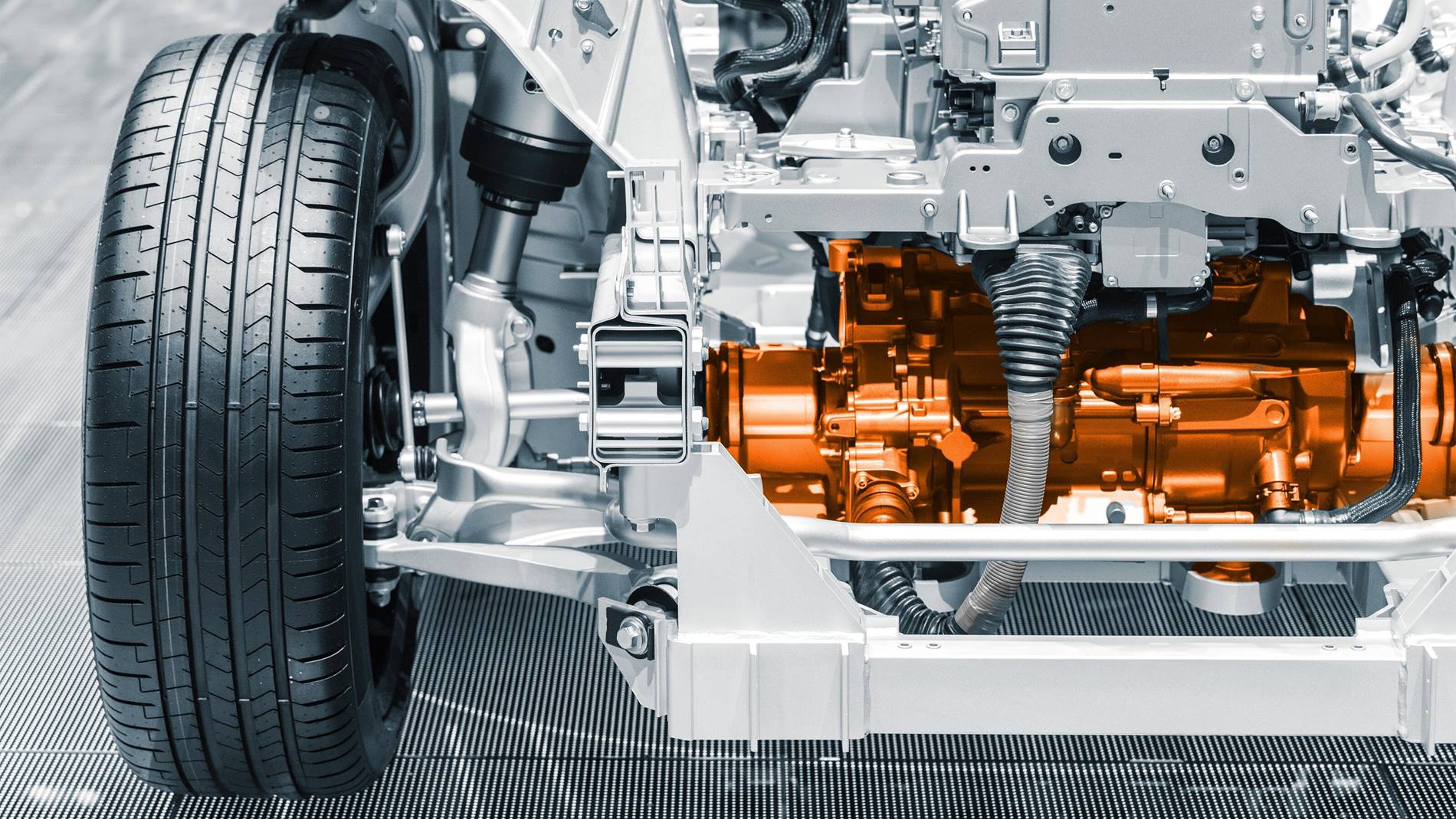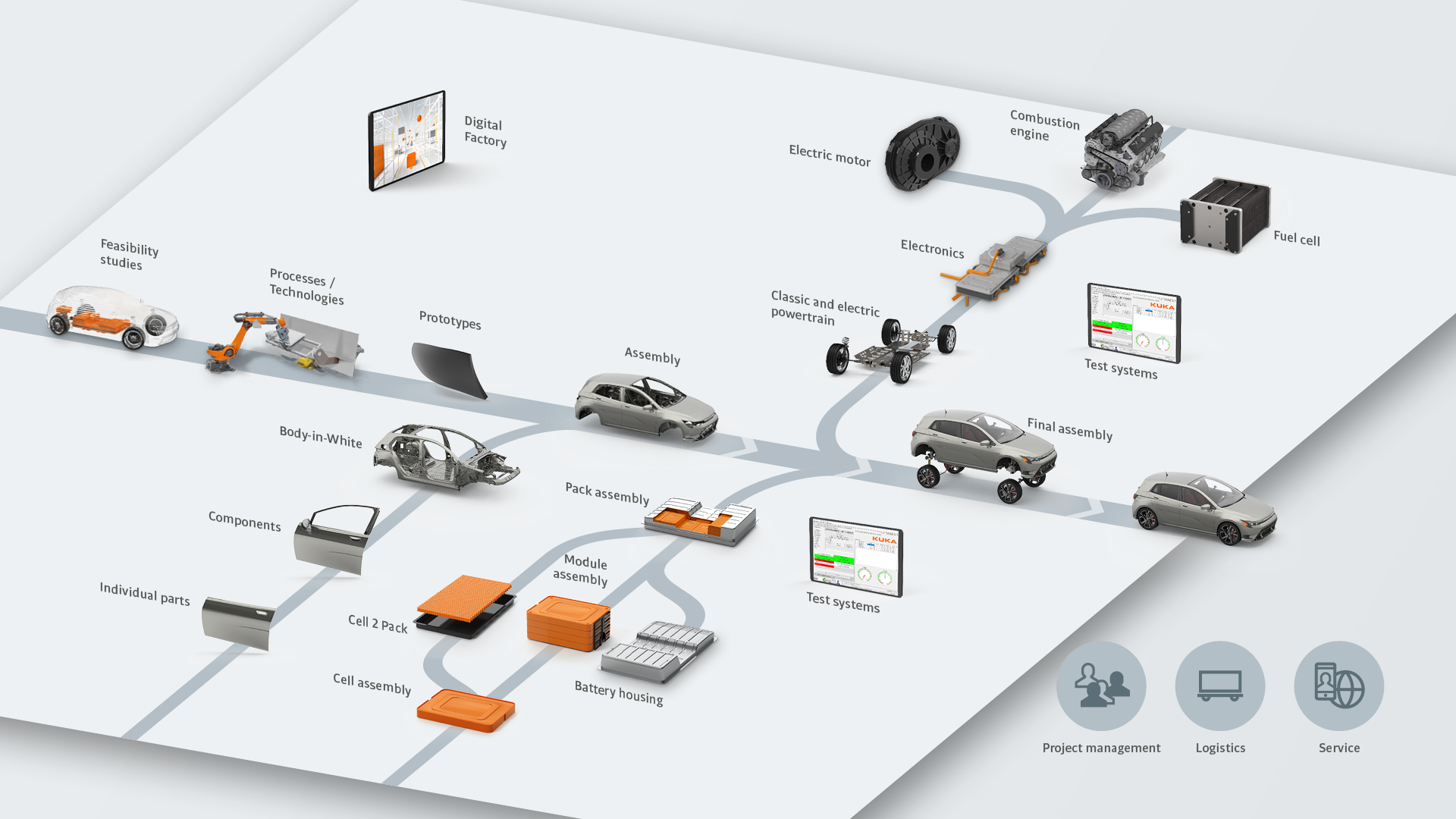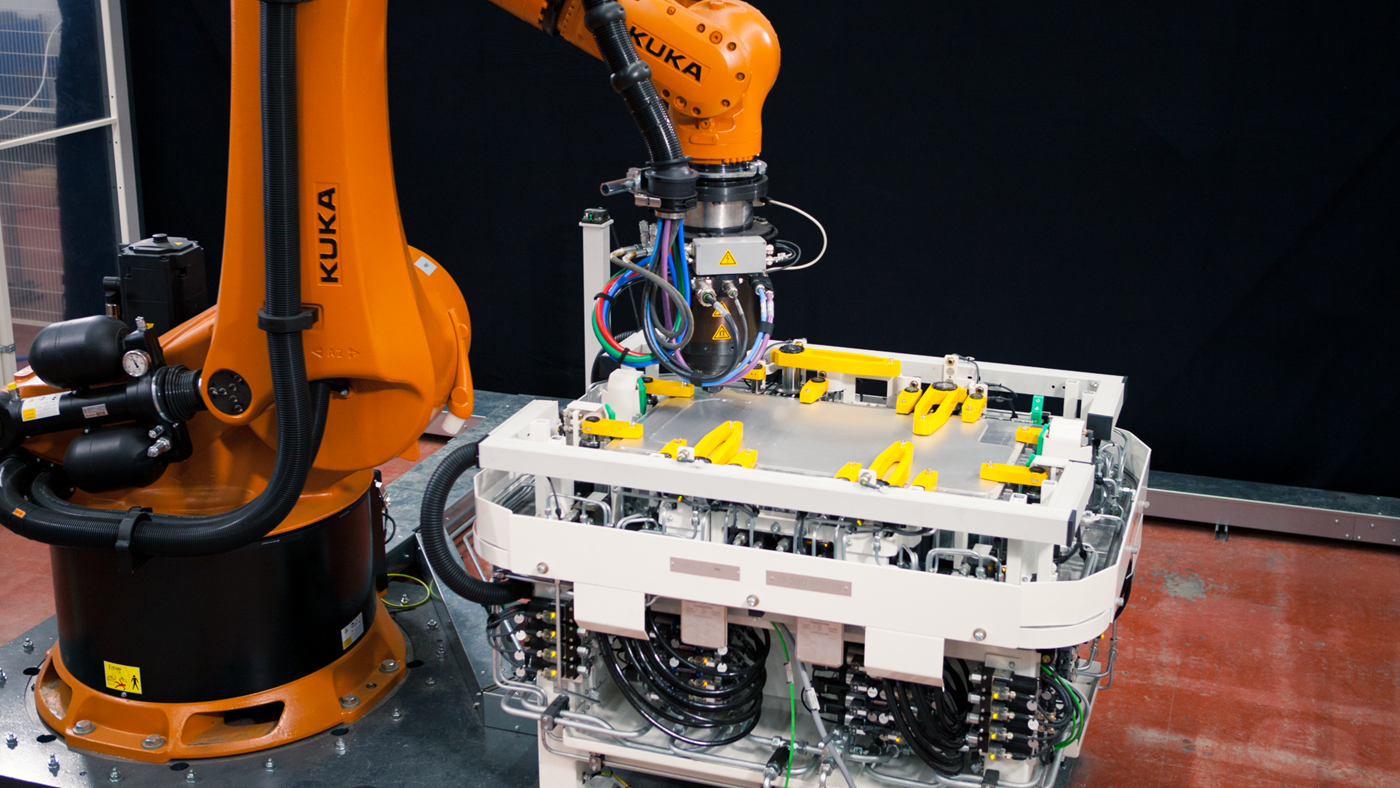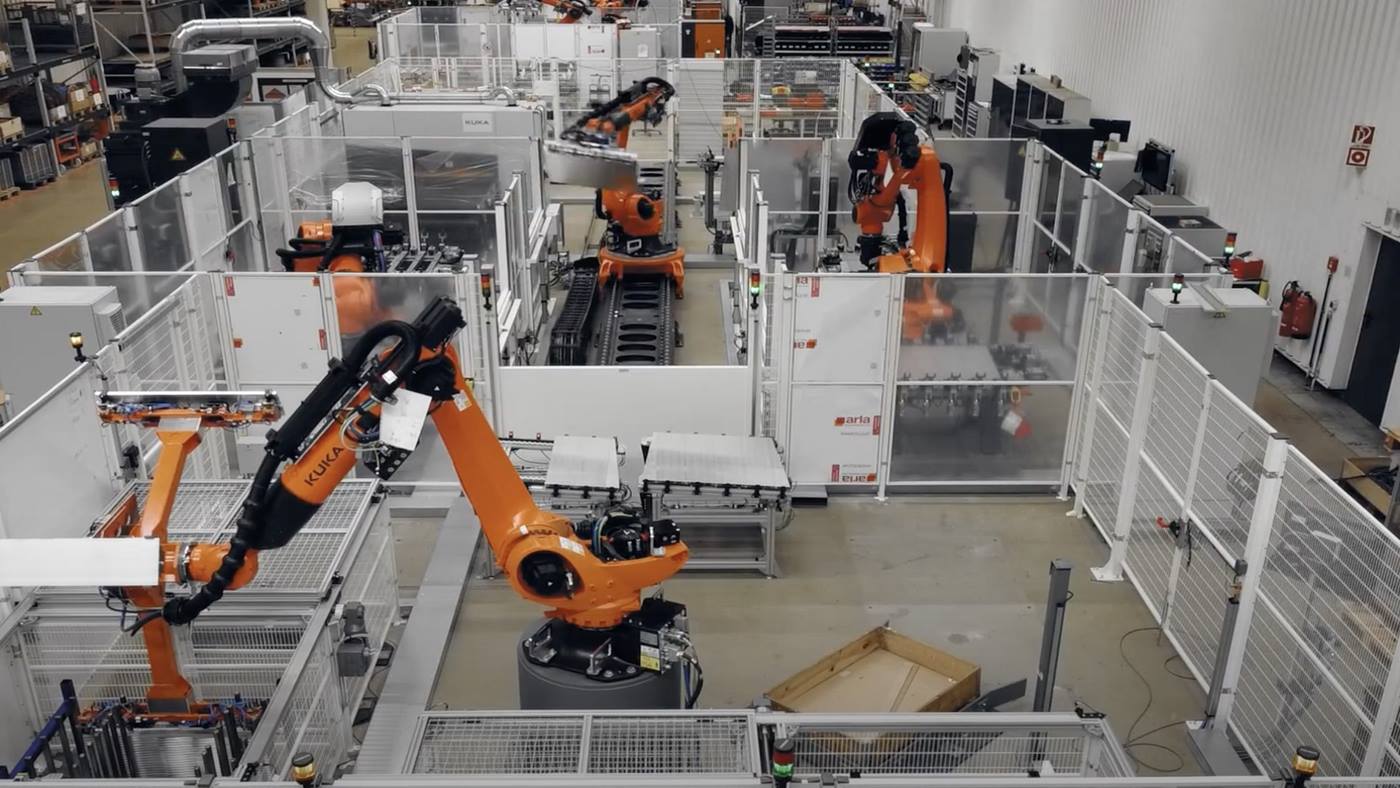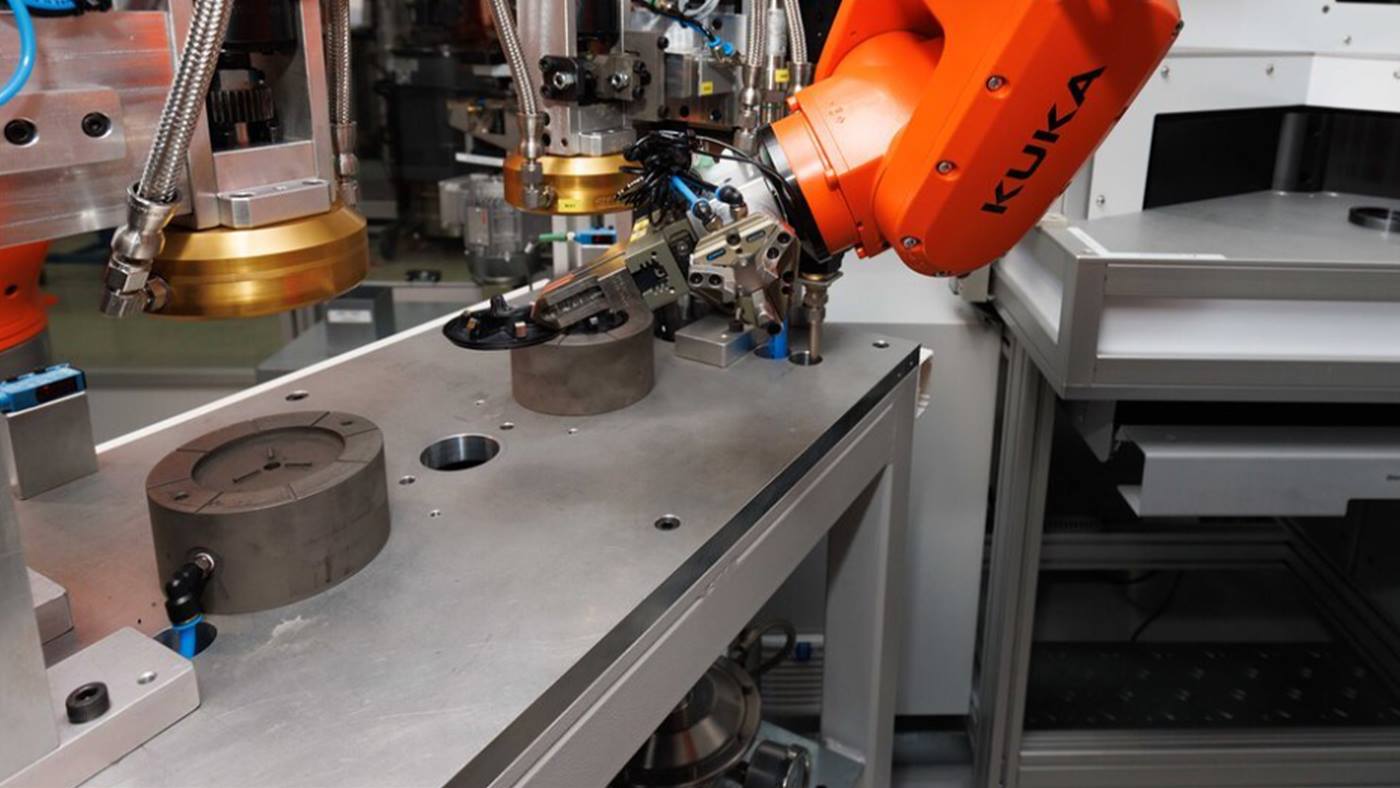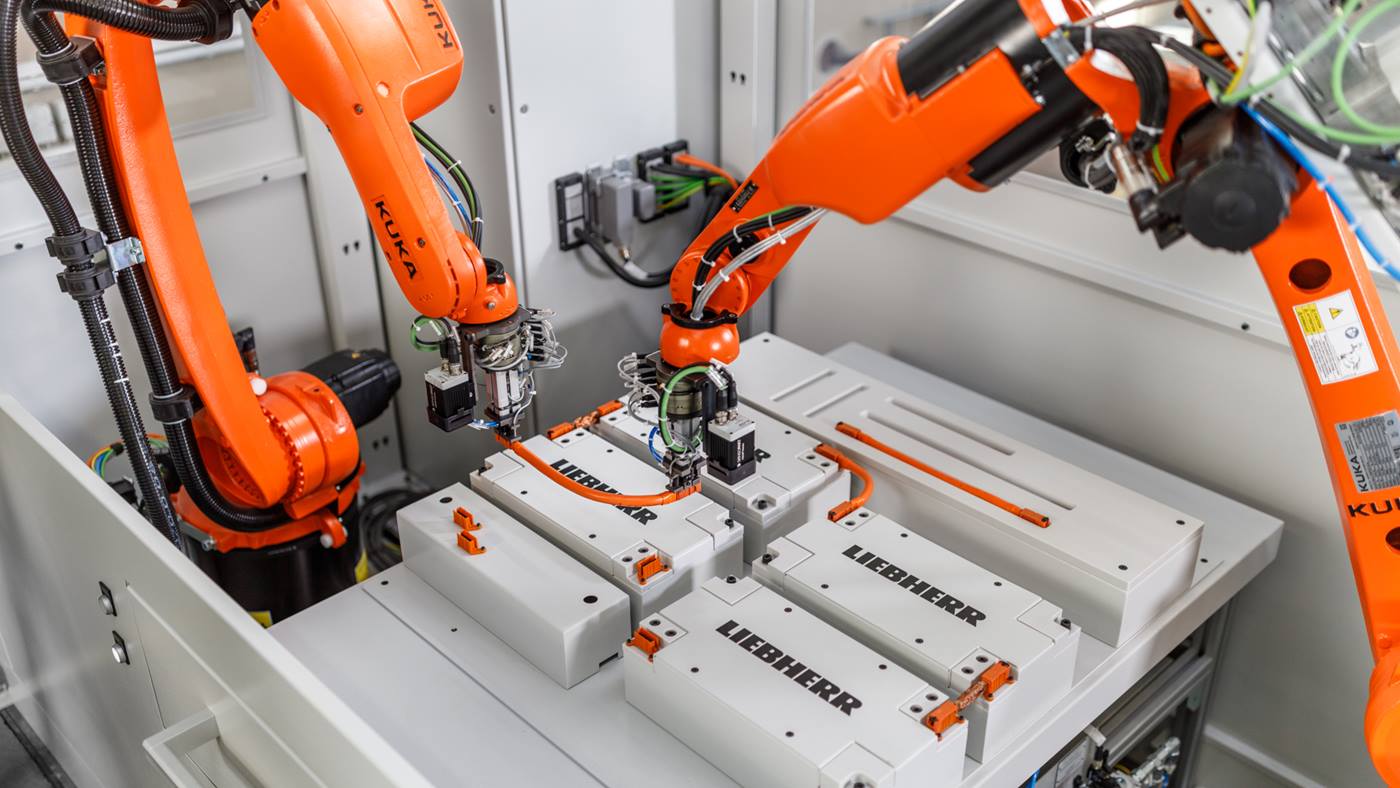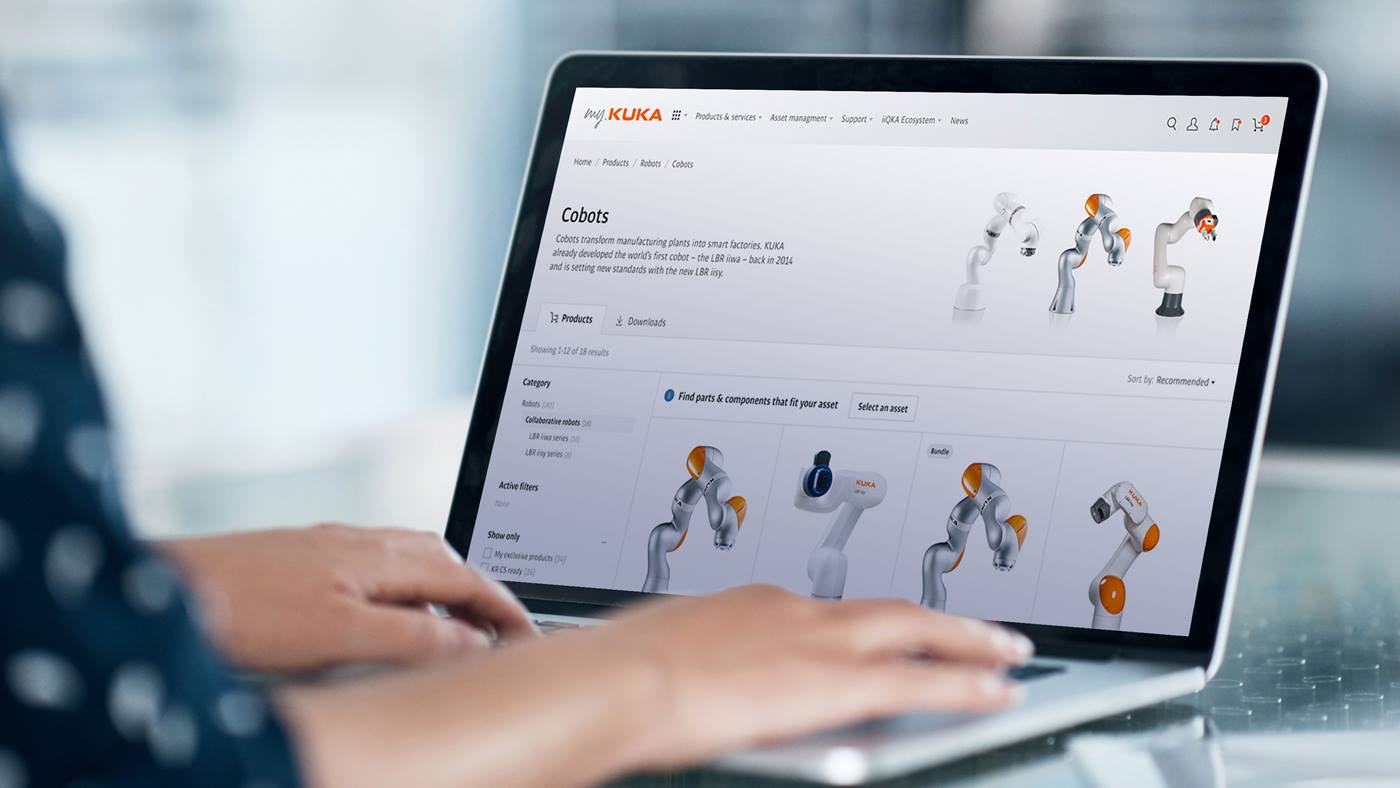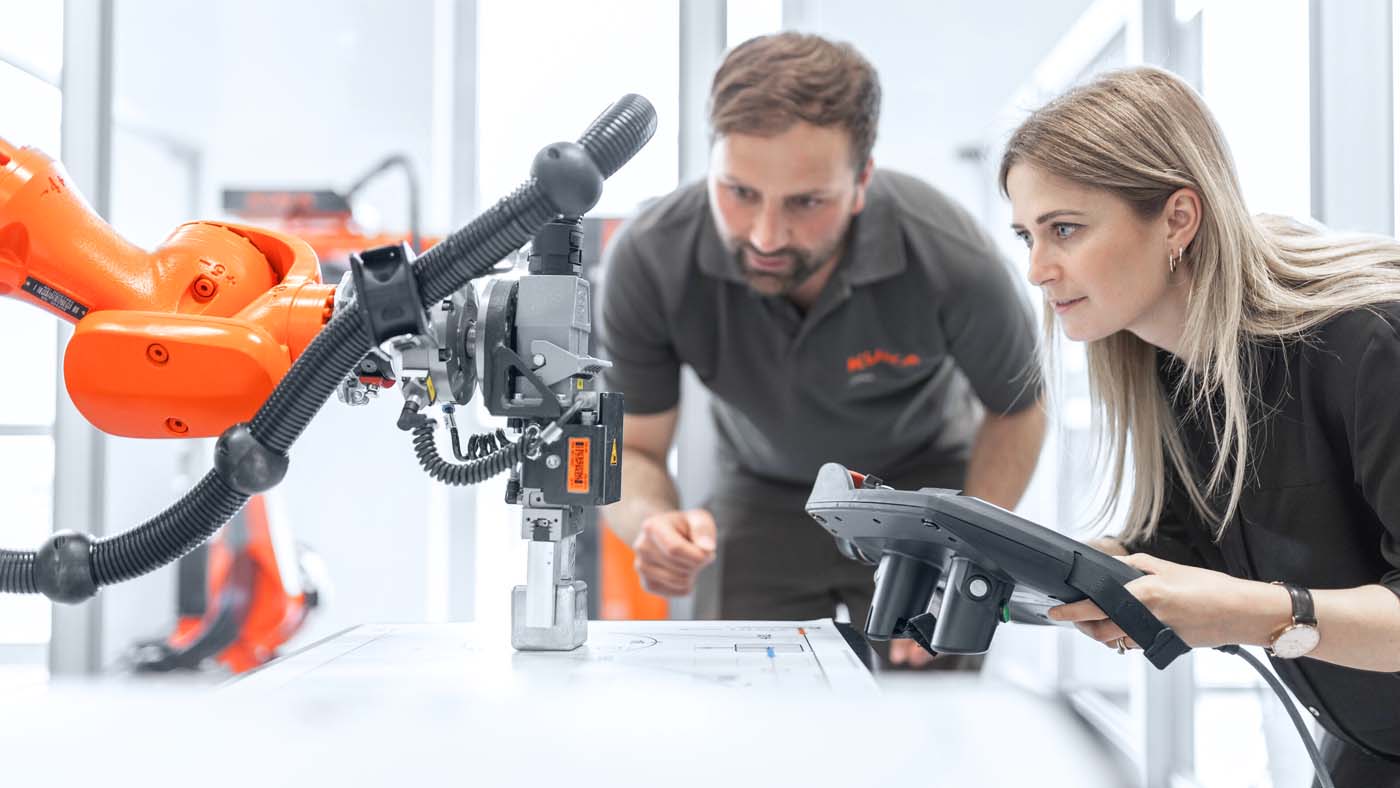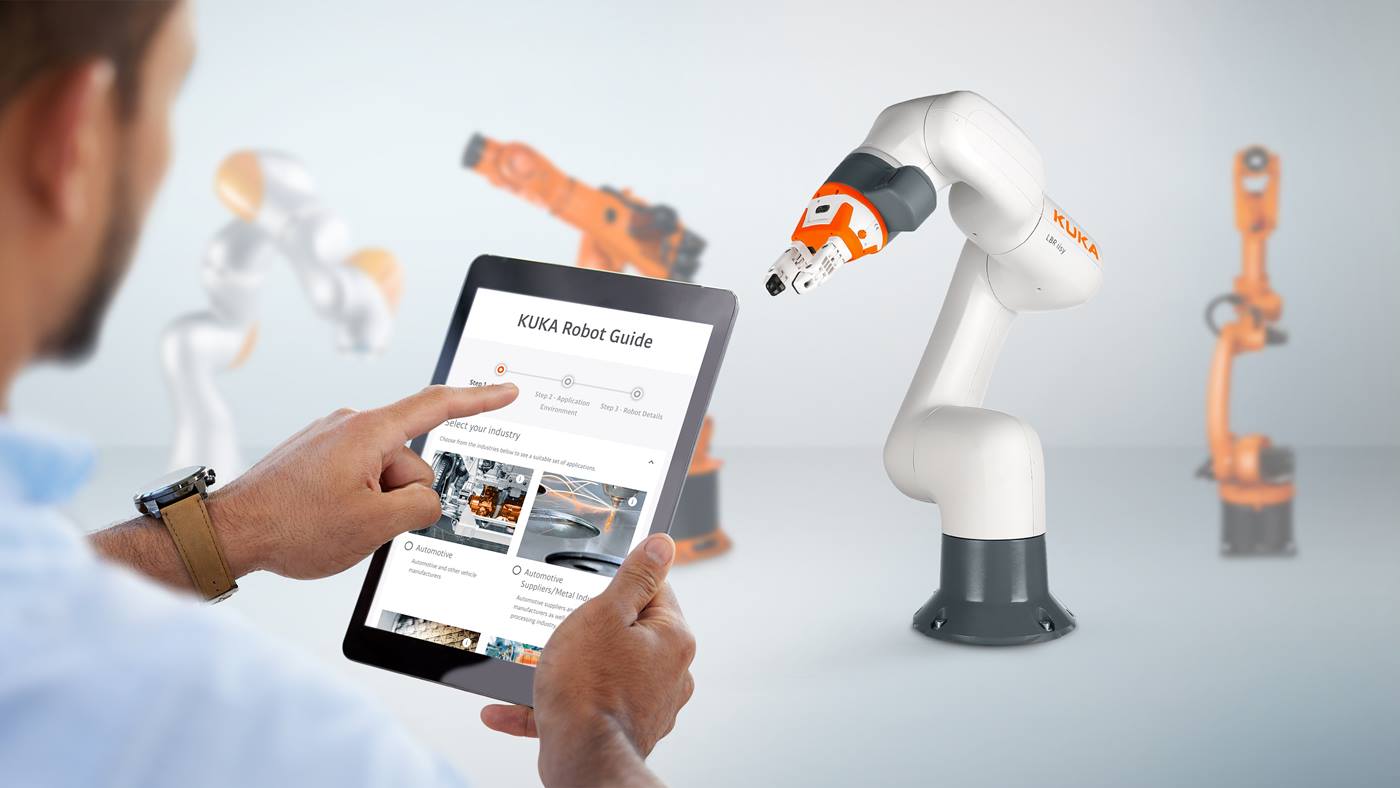Electromobility and KUKA – a dynamic duo
Expert support during each automation step
With a clear focus on state-of-the-art automation and pioneering mobility solutions, KUKA is shaping the entire field of electric vehicle production and energy storage. Our expertise also includes advanced welding applications, precise assembly and thorough quality control for a wide range of electrical components. As a reliable engineering partner, we work together with you to find tailor-made solutions for flexible production and support you with global services and efficient project management during start-up.
Discover the automation options and services that are of interest to you:

